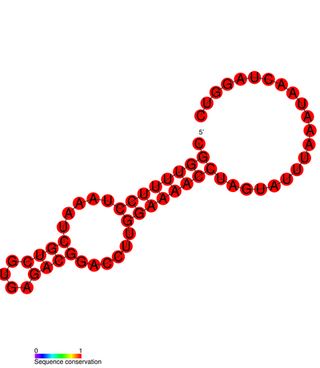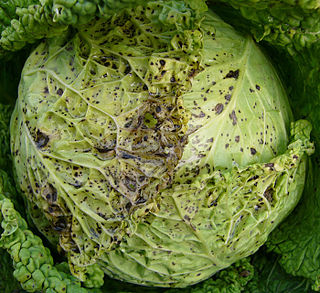
Closteroviridae is a family of viruses. Plants serve as natural hosts. There are four genera and 59 species in this family, seven of which are unassigned to a genus. Diseases associated with this family include: yellowing and necrosis, particularly affecting the phloem.

Potyviridae is a family of positive-strand RNA viruses that encompasses more than 30% of known plant viruses, many of which are of great agricultural significance. The family has 12 genera and 235 species, three of which are unassigned to a genus.
Sequivirus is a genus of viruses in the order Picornavirales, in the family Secoviridae. Plants serve as natural hosts. There are three species in this genus. Diseases associated with this genus include: PYFV: vein-yellowing, yellow flecks and yellow/green mosaic symptoms in parsnip, and ‘yellow net', followed by yellow spots and leaf distortion in celery.

Tymoviridae is a family of single-stranded positive sense RNA viruses in the order Tymovirales. Plants serve as natural hosts. There are 42 species in this family, assigned to three genera, with two species unassigned to a genus.
Furovirus is a genus of viruses, in the family Virgaviridae. Graminae, winter wheat, wheat, triticale, oat, sorghum bicolor, and plants serve as natural hosts. There are six species in this genus. Diseases associated with this genus include: (SBWMV): green and yellow mosaic.
Pomovirus is a genus of viruses, in the family Virgaviridae. Plants and dicotyledons serve as natural hosts. There are five species in this genus. Diseases associated with this genus include: dwarfing of shoots (mop-top) and potato spraing disease. The name of the genus is derived from Potato mop-top virus, Potato mop-top virus, giving rise to Pomovirus.
Tobravirus is a genus of viruses, in the family Virgaviridae. Plants serve as natural hosts. There are three species in this genus. Diseases associated with this genus include: SBWMV: green and yellow mosaic.

Alphaflexiviridae is a family of viruses in the order Tymovirales. Plants and fungi serve as natural hosts. There are 65 species in this family, assigned to six genera. Diseases associated with this family include: mosaic and ringspot symptoms.
Macluravirus is a genus of viruses, in the family Potyviridae. Plants serve as natural hosts. There are ten species in this genus.
Bymovirus is a genus of viruses, in the family Potyviridae. Plants serve as natural hosts. There are six species in this genus.
Capillovirus is a genus of viruses in the order Tymovirales, in the family Betaflexiviridae. Plants, pome fruits, citrus, and pear serve as natural hosts. There are four species in this genus. Diseases associated with this genus include: abnormal graft union, possibly black necrotic leaf spot disease.

Comovirus is a genus of viruses in the order Picornavirales, in the family Secoviridae, in the subfamily Comovirinae. Plants serve as natural hosts. There are 15 species in this genus.
Enamovirus is a genus of viruses, in the family Solemoviridae. Plants serve as natural hosts. There are five species in this genus. Diseases associated with this genus include: pea enation disease: if both PEMV-1 and PEMV-2 are present.
Maculavirus is a genus of viruses in the order Tymovirales, in the family Tymoviridae. Plants serve as natural hosts. There is only one species in this genus: Grapevine fleck virus.
Marafivirus is a genus of viruses in the order Tymovirales, in the family Tymoviridae. Plants serve as natural hosts. There are 11 species in this genus.
Rymovirus is a genus of viruses, in the family Potyviridae. Plants serve as natural hosts. There are three species in this genus.
Torradovirus is a genus of viruses in the order Picornavirales, in the family Secoviridae. Plants serve as natural hosts. There are six species in this genus. Diseases associated with this genus include: torrado disease: severe necrosis of leaves and fruits.
Tritimovirus is a genus of viruses, in the family Potyviridae. Plants serve as natural hosts. There are six species in this genus.
Waikavirus is a genus of viruses in the order Picornavirales, in the family Secoviridae. Plants, poaceae, cyperaceae, and gramineae serve as natural hosts. There are four species in this genus. Diseases associated with this genus include: MCDV: plant stunting and chlorotic striping of tertiary leaf veins in maize.
Poacevirus is a genus of viruses, in the family Potyviridae. Poaceae plants serve as natural hosts. There are three species in this genus.




